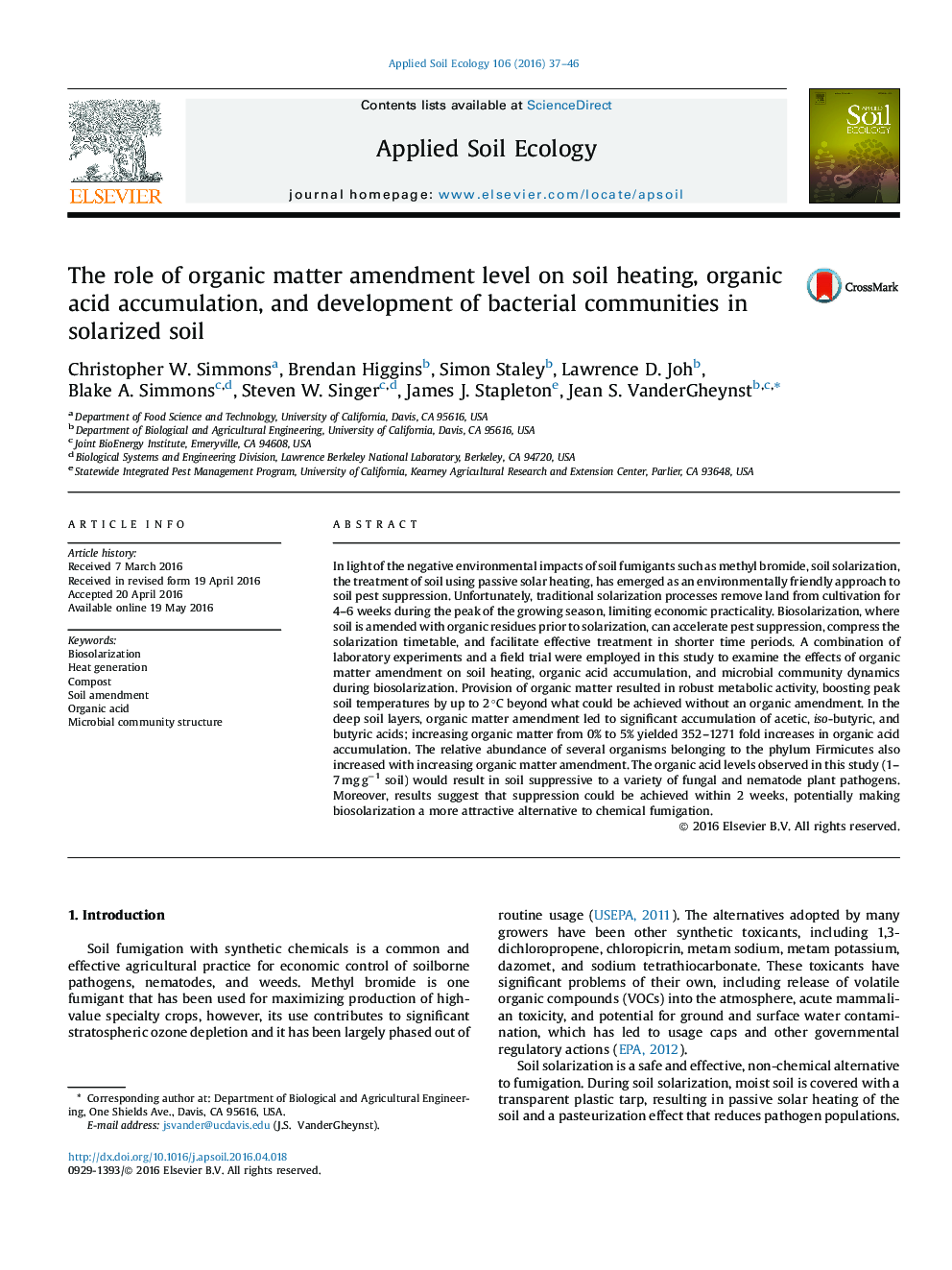| کد مقاله | کد نشریه | سال انتشار | مقاله انگلیسی | نسخه تمام متن |
|---|---|---|---|---|
| 4381825 | 1617777 | 2016 | 10 صفحه PDF | دانلود رایگان |
• Lignocellulose amendment increased soil heating and organic acid production.
• Observed organic acid concentrations should inactivate a variety of plant pests.
• Organisms of phylum Firmicutes likely produced organic acids.
• Augmented heating and organic acids from biosolarization can speed disinfestation.
In light of the negative environmental impacts of soil fumigants such as methyl bromide, soil solarization, the treatment of soil using passive solar heating, has emerged as an environmentally friendly approach to soil pest suppression. Unfortunately, traditional solarization processes remove land from cultivation for 4–6 weeks during the peak of the growing season, limiting economic practicality. Biosolarization, where soil is amended with organic residues prior to solarization, can accelerate pest suppression, compress the solarization timetable, and facilitate effective treatment in shorter time periods. A combination of laboratory experiments and a field trial were employed in this study to examine the effects of organic matter amendment on soil heating, organic acid accumulation, and microbial community dynamics during biosolarization. Provision of organic matter resulted in robust metabolic activity, boosting peak soil temperatures by up to 2 °C beyond what could be achieved without an organic amendment. In the deep soil layers, organic matter amendment led to significant accumulation of acetic, iso-butyric, and butyric acids; increasing organic matter from 0% to 5% yielded 352–1271 fold increases in organic acid accumulation. The relative abundance of several organisms belonging to the phylum Firmicutes also increased with increasing organic matter amendment. The organic acid levels observed in this study (1–7 mg g−1 soil) would result in soil suppressive to a variety of fungal and nematode plant pathogens. Moreover, results suggest that suppression could be achieved within 2 weeks, potentially making biosolarization a more attractive alternative to chemical fumigation.
Figure optionsDownload as PowerPoint slide
Journal: Applied Soil Ecology - Volume 106, October 2016, Pages 37–46
